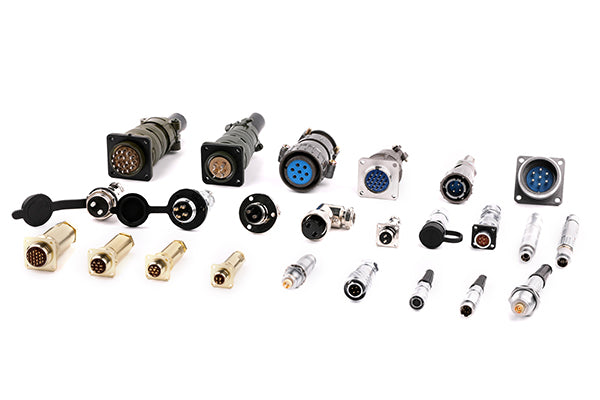Circular connector
Circular connector
A circular connector is a fundamental class of electrical connector characterized by its cylindrical housing and circular mating interface. They are designed primarily for reliability and performance in demanding environments, making them ubiquitous across countless industries beyond automotive, including aerospace, military, industrial machinery, medical equipment, and marine applications.
Key Functions and Advantages:
-
Environmental Resilience: Their primary advantage is an exceptional ability to be sealed against environmental hazards. They are renowned for providing high levels of ingress protection (e.g., IP67, IP68, IP69K) against moisture, dust, and chemicals.
-
Robustness: The circular design naturally provides strength and resistance to mechanical stress, including shock and vibration. The threaded coupling mechanism is exceptionally secure and resistant to accidental disconnection.
-
EMI/RFI Shielding: Many circular connectors feature metallic shells that provide excellent electromagnetic and radio frequency interference (EMI/RFI) shielding, protecting signal integrity in electrically noisy environments.
-
High Density: Despite their shape, modern circular connectors can house a large number of contacts (power, signal, data, and coaxial) in a relatively compact space.
-
Reliable Mating: The threaded coupling system ensures a secure, reliable connection that won't loosen under vibration and provides a consistent mating force.
Critical Design Features:
-
Shell (Housing): Typically made of metal (aluminum, stainless steel) or ruggedized plastic. The shell provides mechanical structure, environmental protection, and often EMI shielding.
-
Contacts (Pins and Sockets): The conductive elements that carry the electrical signal or power. They are arranged in concentric circles within the housing. Materials range from brass to phosphor bronze, often plated with gold, silver, or tin for performance and corrosion resistance.
-
Insert: A typically plastic component that holds the contacts in their precise positions within the shell. It provides insulation between contacts.
-
Coupling Mechanism: The most common type is a threaded coupling ring that screws onto the mating receptacle, ensuring a secure and sealed connection. Other types include bayonet (quick-connect), push-pull, and snap-on designs.
-
Sealing System: Utilizes multiple O-rings, grommets, and gland seals to create a tight environmental seal at the cable entry point and between the mated connector halves.
-
Backshell: A protective accessory attached to the rear of the connector where the cable enters. It provides strain relief, protects the cable from bending, and can enhance shielding and environmental sealing.
Common Types and Standards:
Circular connectors are heavily standardized, with many types defined by international and military specifications. Key examples include:
-
MIL-DTL-5015: A classic U.S. military standard for high-reliability, robust connectors.
-
MIL-DTL-38999: A high-performance, lightweight series with a bayonet coupling, widely used in aerospace and defense for its extreme density and reliability.
-
EN 3645 (DIN): A European standard common in aerospace and rail.
-
IEC 61076-2: A international standard for various circular connector families.
-
M-series (M8, M12): Extremely common in industrial automation. M12 connectors are the standard for sensors, actuators, and fieldbus networks (e.g., Profinet, Ethernet/IP). They are often coded (A, B, C, D, X) for different protocols.
-
GX Series: A popular Japanese industrial standard.
-
Hybrid Connectors: Combine electrical, pneumatic (air), hydraulic (fluid), and fiber optic contacts within a single circular shell, simplifying system design.
Automotive Applications:
While not as common as sealed blade-type connectors in the main harness, circular connectors are essential in automotive for harsh locations:
-
Sensor Connections: For engine, transmission, and chassis sensors exposed to elements.
-
External Lighting: Connections for headlights, fog lights, and work lamps.
-
Engine Control Unit (ECU) Connections
-
Battery and High-Current Connections in some electric vehicle systems.
-
On-Board Diagnostics (OBD-II) Port
無法載入取貨服務供應情況
有庫存
查看完整資訊
